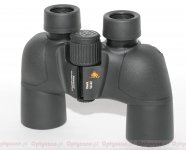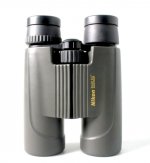Hello,
Contrary to other makers (Zeiss, Swarovski...), the Nikon EDG models are equipped with Schmidt-Pechan prisms, rather than Abbe-König prisms.
Those Schmidt-Pechan prisms (and contrary to Abbe-König prisms) need multi-layer dielectric coating mirror processing to assure the best internal reflections.
Is there already any feedback about the capacity of such surface coatings to endure the test of time (at least for one decade) without any loss of mirroring quality.
In other words is there any possibility that, with time flowing, years after years, the coatings are prone to a deterioration, a peeling, a yellowing, etc.
Problems that can't append with Abbe-König prisms.
Perhaps is it to soon to be able to answer this question?
However, considering the price of such binoculars, to be sure that they are able to stay in good optical condition, years after years, is more than important.
Furthermore the case of a renown terrestrial telescope (used for birding) maker whose some models were prone to lose (through a partial peeling) their objective multi-layer surface treatment, make me a little bit cautious.
By the way, an interesting review of the Nikon EDG 8x42 model :
http://www.scopeviews.co.uk/NikonEDG8x42.htm
By,
MBS
Contrary to other makers (Zeiss, Swarovski...), the Nikon EDG models are equipped with Schmidt-Pechan prisms, rather than Abbe-König prisms.
Those Schmidt-Pechan prisms (and contrary to Abbe-König prisms) need multi-layer dielectric coating mirror processing to assure the best internal reflections.
Is there already any feedback about the capacity of such surface coatings to endure the test of time (at least for one decade) without any loss of mirroring quality.
In other words is there any possibility that, with time flowing, years after years, the coatings are prone to a deterioration, a peeling, a yellowing, etc.
Problems that can't append with Abbe-König prisms.
Perhaps is it to soon to be able to answer this question?
However, considering the price of such binoculars, to be sure that they are able to stay in good optical condition, years after years, is more than important.
Furthermore the case of a renown terrestrial telescope (used for birding) maker whose some models were prone to lose (through a partial peeling) their objective multi-layer surface treatment, make me a little bit cautious.
By the way, an interesting review of the Nikon EDG 8x42 model :
http://www.scopeviews.co.uk/NikonEDG8x42.htm
By,
MBS









